This article was medically reviewed by Janice Litza, MD. Dr. Litza is a board certified Family Medicine Physician in Wisconsin. She is a practicing Physician and taught as a Clinical Professor for 13 years, after receiving her MD from the University of Wisconsin-Madison School of Medicine and Public Health in 1998.
There are 12 references cited in this article, which can be found at the bottom of the page.
This article has been viewed 18,377 times.
While small intestinal bacterial overgrowth (SIBO) can be tricky to diagnose, this condition is relatively simple to treat if diagnosed correctly. SIBO is caused by extra bacteria in your small intestines. It can be difficult to diagnose because its symptoms are similar to other diseases. Furthermore, each person may experience symptoms differently. Fortunately, your doctor can use several tests to determine if you have SIBO or something else. Treatment of SIBO includes antibiotics, supplements, and a low-carb diet.
Steps
Watching for Symptoms
-
1Monitor any diarrhea lasting longer than 3-4 weeks. Diarrhea caused by SIBO is often watery and thin. It is chronic, which means that it will last more than 3-4 weeks. While diarrhea can be caused by many conditions, chronic diarrhea may be a sign of SIBO or other serious digestive issues.[1]
- Usually, if you have had diarrhea for more than 3 days, you should contact a doctor. Even if it isn't chronic diarrhea, it could be a sign of another illness.
-
2Check for abdominal pain, bloating, or fullness. You may feel a pain or fullness in your general abdominal area or just below your stomach. These may feel like cramps. Bloating or distention, where your belly is pushed out more than normal, may also occur.[2]Advertisement
-
3Note any fatigue or weakness you experience. SIBO can cause malabsorption, which means that your body is not digesting the nutrients from your food. As a result, you may feel more tired than usual. You may occasionally feel faint, shaky, or physically weak.[3]
-
4Track your diet to see if you are losing weight without explanation. If you are eating the same amount of food but losing weight, it could be caused by malabsorption from SIBO. Use a calorie tracker like MyFitnessPal or Supertracker. Record everything you eat and all of your physical activities.[4]
- Normally, to lose weight, you need to burn more calories than you eat. If you are losing weight without burning more calories, you may have SIBO or another digestive issue.
-
5Determine your risk factors for SIBO. SIBO usually occurs as a result of another gastrointestinal or metabolic disorder. It is more common in adults over the age of 70. If you have one of these conditions or risk factors, your doctor will be more likely to test for SIBO. Risk factors include:[5]
- Irritable bowel syndrome (IBS)
- Celiac disease
- Crohn’s disease
- Metabolic disorders like diabetes
- Immunodeficiency diseases like AIDS or immunoglobulin deficiency.
- A history of bowel or intestinal surgery.[6]
Undergoing Medical Testing
-
1Make an appointment with your primary care physician. Many of the symptoms of SIBO are similar to other digestive or gut disorders. Your doctor will determine if you have SIBO or something else. Your doctor can also discover if your SIBO is caused by another underlying condition.[7]
-
2Perform a lactulose breath test at your doctor’s office or at home. Your doctor may do this test at their office or give you a home test. If you do the home test, read the instructions carefully. You may need to mail the sample to a lab. This test can take up to 3 hours.[8]
- Tests can vary in design. Generally, you will breathe into a specially marked tube and screw on a cap. Next, drink a special solution containing glucose and lactulose. After 30, 60, or 90 minutes (depending on your test), breathe into the marked tubes.
- You may need to stop taking certain antibiotics and probiotics for up to a week before this test. Talk to your doctor for more information.
-
3Submit yourself to a blood test. Your doctor will draw your blood to perform a few different tests. These include a complete blood count to check your white blood cell levels and a test to determine levels of albumin and vitamins in your blood.[9]
-
4Collect a stool sample for your doctor to do a fecal fat test. Fatty stools are a sign of SIBO. Take a stool sample at home so your doctor test for fecal fat. Stretch plastic wrap over your toilet bowl, using the seat to hold it in place. Defecate over the sheet. Wrap the stool up in the plastic. Put it in a container given to you by your doctor and take it back to their office.[10]
- If you need to do this test for an infant or baby, line their diaper with plastic wrap.
- Your doctor may give you a stool collecting kit with a special tissue. In this case, just wipe yourself with the tissue after you defecate and put it into the kit’s container.
-
5Use an x-ray to check for structural abnormalities in your gut. Your doctor may check for small sacs called diverticula or a narrowing of the intestine called a stricture. These can harbor extra bacteria in your intestines.[11]
- If you’ve ever had intestinal surgery, you may be at increased risk of SIBO. Your doctor will likely order x-rays to see if your small intestines is inflamed or if it has developed strictures.
-
6Undergo a small intestines biopsy in ambiguous cases. If your doctor is uncertain about the diagnosis, they may order this test. The doctor will put a tube called an endoscope down your throat to take a sample from your small intestines. They will then send it to a lab to test it for SIBO or disorders like Celiac disease.[12]
- The procedure usually only takes an hour to do. You will need to undergo anesthesia for it. You may have a sore throat afterwards.
Treating SIBO
-
1Treat the underlying condition causing SIBO. If your doctor determined that SIBO is caused by another condition, you will need to treat that condition first. Depending on the cause, you may be given prescription medication, a special diet, or, in severe cases, surgery.[13]
- Diet is often used to manage symptoms of Celiac disease and gastrointestinal motility disorders.
- If you have Crohn’s Disease, your doctor may prescribe anti-inflammatory drugs, immune system suppressants, and a special diet. In severe cases, you may need surgery to remove part of your digestive tract.
-
2Take a prescription antibiotic. Your doctor may give you amoxicillin, ciprofloxacin, or doxycycline to reduce the bacterial overgrowth. Follow your doctor’s instructions for taking this medication. Usually, you will take this medication for 7-10 days.[14]
-
3Take a supplement containing B12, calcium, and magnesium. Since malabsorption can cause vitamin deficiencies, your doctor may recommend a vitamin and mineral supplement. Do not start taking a supplement, however, without talking to your doctor first.[15]
-
4Eat a low-carbohydrate diet. Foods high in carbohydrates may encourage more bacterial growth. While you are recovering, choose foods that are low in carbs, like meats, fish, eggs, nuts, and green vegetables. Avoid grains, sugary drinks, beans, and potatoes.[16]
- For example, instead of eating cereal for breakfast, eat scrambled eggs.
- For lunch, you might have a salad with spinach, avocado, tomatoes, and almonds.
- For dinner, you can eat salmon or chicken. Instead of rice or bread, eat extra vegetables, like broccoli, cabbage, or a kale salad.
-
5Choose foods containing prebiotics. Prebiotics promote “good” bacteria in your gut. While they are still being studied, prebiotics may be able to help you restore a healthy balance in your gut. Good foods include:[17]
- Yogurt with active cultures
- Sauerkraut (naturally fermented and found in the produce section)
- Pickles (naturally fermented and found in the produce section)
- Kimchi
- Dark chocolate
- Peas
- Tempeh
- Kombucha
- Sourdough bread
References
- ↑ https://www.mayoclinic.org/diseases-conditions/small-intestinal-bacterial-overgrowth/symptoms-causes/syc-20370168
- ↑ https://medlineplus.gov/ency/article/000222.htm
- ↑ https://www.ncbi.nlm.nih.gov/pmc/articles/PMC3099351/#B6
- ↑ http://www.merckmanuals.com/professional/gastrointestinal-disorders/malabsorption-syndromes/overview-of-malabsorption
- ↑ https://www.ncbi.nlm.nih.gov/pmc/articles/PMC3099351/
- ↑ https://www.mayoclinic.org/diseases-conditions/small-intestinal-bacterial-overgrowth/symptoms-causes/syc-20370168
- ↑ https://medlineplus.gov/ency/article/000222.htm
- ↑ https://www.ncbi.nlm.nih.gov/pmc/articles/PMC4814632/
- ↑ https://medlineplus.gov/ency/article/000222.htm
- ↑ https://www.mayoclinic.org/diseases-conditions/small-intestinal-bacterial-overgrowth/diagnosis-treatment/drc-20370172
- ↑ https://www.ncbi.nlm.nih.gov/pmc/articles/PMC3099351/
- ↑ https://medlineplus.gov/ency/article/000222.htm
- ↑ https://journals.lww.com/jpgn/fulltext/2016/02000/Small_Bowel_Bacterial_Overgrowth_in_Children.6.aspx
- ↑ https://www.ncbi.nlm.nih.gov/pmc/articles/PMC3099351/#B6
- ↑ https://www.ncbi.nlm.nih.gov/pmc/articles/PMC3099351/#B6
- ↑ https://medlineplus.gov/ency/article/000222.htm
- ↑ https://journals.lww.com/jpgn/fulltext/2016/02000/Small_Bowel_Bacterial_Overgrowth_in_Children.6.aspx
-Step-1-Version-2.webp)
-Step-2-Version-2.webp)
-Step-3-Version-2.webp)
-Step-4-Version-2.webp)
-Step-5-Version-2.webp)
-Step-6-Version-2.webp)
-Step-7-Version-2.webp)
-Step-8-Version-2.webp)
-Step-9-Version-2.webp)
-Step-10-Version-2.webp)
-Step-11-Version-2.webp)
-Step-12-Version-2.webp)
-Step-13-Version-2.webp)
-Step-14-Version-2.webp)
-Step-15-Version-2.webp)
-Step-16-Version-2.webp)
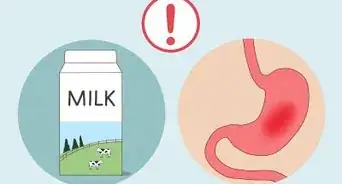
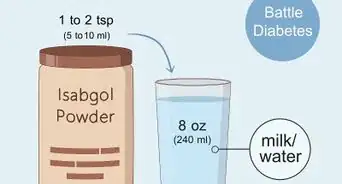


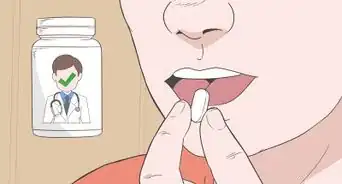



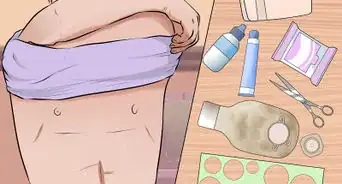
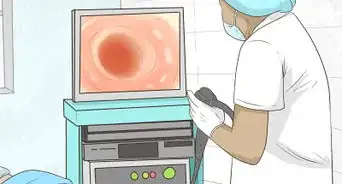



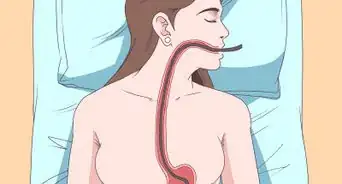








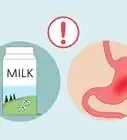
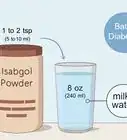
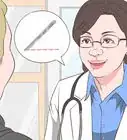




































Medical Disclaimer
The content of this article is not intended to be a substitute for professional medical advice, examination, diagnosis, or treatment. You should always contact your doctor or other qualified healthcare professional before starting, changing, or stopping any kind of health treatment.
Read More...